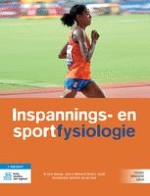Introductie
Sporters, soldaten en arbeiders zoeken altijd naar manieren om hun lichamelijke en mentale prestaties nog méér te verbeteren dan door training alléén. De sterke aantrekkingskracht van prestatiebevorderende middelen, die een boost beloven in lichamelijke capaciteit en mentale focus, is te begrijpen gezien de zéér competitieve natuur van de sport en de extremen lichamelijke eisen die gesteld worden aan soldaten en aan sommige arbeiders.
Enkele enquête-studies geven aan dat 100 % van de bevraagde topsporters in bepaalde sporten voedingssupplementen gebruikten, zelfs in sporten waar er regelmatig wordt getest op dopinggeduide prestatiebevorderende middelen.
21 Hoewel onderzoek laat zien dat sommige voedingssupplementen effectief zijn in het bevorderen van prestaties, zijn de meeste dat niet, en sommige supplementen zijn verontreinigd met verboden stoffen zoals anabole stoffen en stimulantia. In de Verenigde Staten wordt de productie en verkoop van voedingssupplementen gecontroleerd door de Food and Drug Administration, waarbij de wettelijke regels de producenten in staat stellen om ingrediënten te gebruiken en effecten te claimen die niet zijn toegestaan bij ‘gewone’ voeding en dranken. Deze regels geven producenten veel vrijheid bij de marketing van producten die geweldige toename bevolen in kracht, vermogen, spiermassa, uithoudingsvermogen en prestaties, die niet onderbouwd hoeven te zijn door goed wetenschappelijk onderzoek.
Wat de situatie voor sporters nog moeilijker maakt, is dat de producenten zich niet altijd bewust zijn dat de ingrediënten die ze overal ter wereld inkopen verontreinigd kunnen zijn met verboden stoffen.
Deze verboden stoffen zijn vaak medicijnen die officieel alleen op recept zijn te krijgen of aangepaste versies daarvan. Sommige supplementen hebben zelfs verboden stoffen als ingrediënten op het etiket van het product staan. Naast de niet-opzettelijke verontreiniging van supplementen heeft de nooit eindigende zoektocht naar prestatieverbetering, gewichtsverlies of het veranderen van het uiterlijk sommige sporters gebracht tot het doelbewust gebruiken van verboden middelen of technieken. Decennia van opzettelijk vals spelen hebben geleid tot de implementatie van geavanceerde dopingtests door het World Anti-Doping Agency (WADA), om sporters op te sporen die pogen een oneerlijk voordeel te verkrijgen ten opzichte van hun concurrenten. Helaas testen sommige sporters positief op dopingtests omdat ze supplementen gebruiken die, buiten hun medeweten, verboden ingrediënten bevatten. Hoewel zij niet de bedoeling hadden om vals te spelen, lopen deze sporters ook het risico op lange schorsingen, hoge juridische kosten en verlies van hun goede reputatie.
